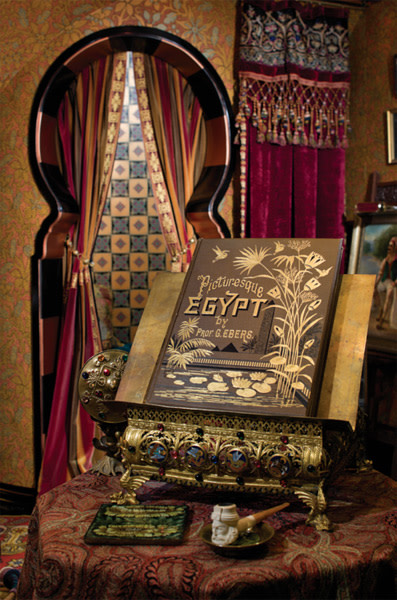
A bookstand is the sine qua non for a library, as with this elaborate, bejeweled and gilded metal stand ca. 1880, which displays an equally ornate volume on the mysteries of Egypt, and sits appropriately in an early-20th-century Turkish room. (Photo: William Wright)
With a Cambridge accent, please: “Won’t you join me in the library?” As old-house dwellers, we dream of that line; that one’s home should offer a chamber devoted to the pursuit of knowledge and intellectual delight sounds so nice, much better than “Let’s go in the den where I have paperbacks stuffed into some IKEA bookcases” (or “Let’s go in the den and watch ‘Survivor’”). Bookshelves a library do not make. A home library references the past as much as it does literature.
Functionally, the existence of a library is often rationalized as a home office. But today an office requires nothing more than a laptop, a cell phone, and a file cabinet. A library is more than this! Technology has reduced the basic requirements of an office, but a library begs for space: for books, for furniture, for globes and maps and collections and decoration. A library expresses our love of history.
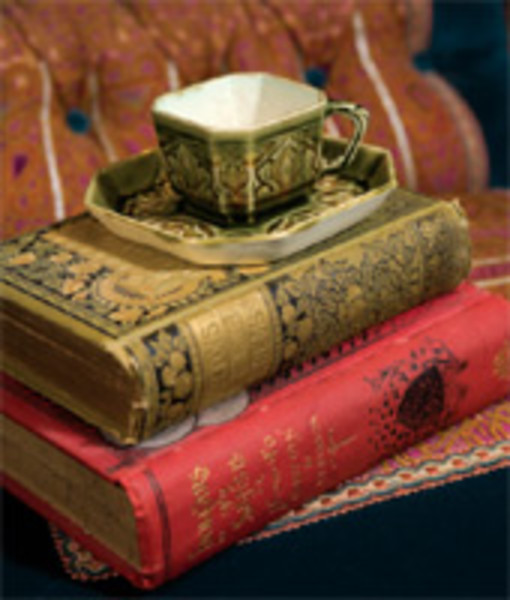
With their beautiful bindings, old books are themselves objets d’art. Two 19th-century volumes hold a ca. 1880 Linthorpe teacup on a button-tufted Aesthetic chaise. (Photo: William Wright)
Within the gossamer haze of nostalgia, the library has become a repository for our collections of arcane clutter. In fact, nowhere in our homes is such an expanse of clutter (or collections, the more positive euphemism) accepted; it is here that we proudly site our prized, ebonized Eastlake easels holding gilt-framed chromolithographs. (If said objet were plunked down in the great room or foyer, the pitter-patter of little hooves would be a harbinger of glass and gesso crashing to the floor.)
Here we have found a shelter for our knick-knacks and accoutrements that perhaps would be out of place elsewhere in the house: the globes (even the new ones out of date), the cigar-holders (so politically incorrect), the stereoscope and its attendant cards (yes, children, our lives are dull). Add such things as bookstands, bookends, and rolling ladders, to say nothing of the exquisitely bound books themselves, and we can transport ourselves to an Edwardian fantasy removed from the rush of the present.
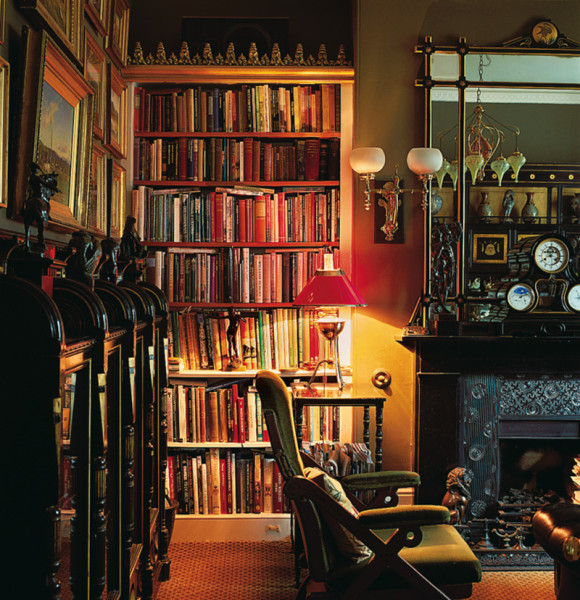
Books reside in bookcases (with Gothic cornice ornament) and in display cases in this home library in Great Britain. (Photo: Huntley Hedworth)
This is truly the allure of a library. It graciously accepts our quirks and passions and allows them to reside in peace—away from the plasma-screen television with surround-sound and the faux restaurant range. One would think that the digital age has made the library obsolete, and perhaps it has from a technological point of view. But that’s my point: This room stands as a defiant symbol against technology and progress. It’s a place for quiet reflection and the appreciation of refinement.
Long the refuge of the male, the library still smacks of masculinity, not so much in the gender of its occupants or their then-forbidden predilection for tobacco and liquor, but in the dark robustness of its furnishings. The heavier furniture associated with the room’s purpose contributes to this; bookcases must be substantial to support the weight of their volumes, and thus, stylistically, the desks, chairs, and tables follow suit. In free association, one seldom pairs the words “library” with “delicate” or “frilly”; here, even ornamental excess tends towards the talon, the column, and taxidermy.
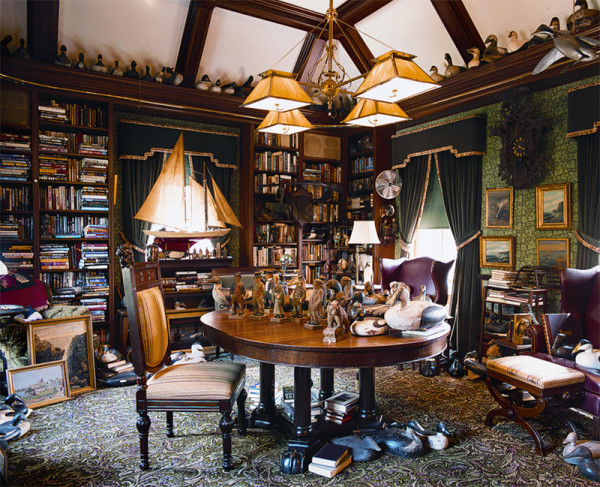
In a turn-of-the-century Shingle/Colonial Revival house, the master’s library has an old English feel and is crammed with paintings, collections, maritime memorabilia, a rifle—and books. (Photo: Eric Roth)
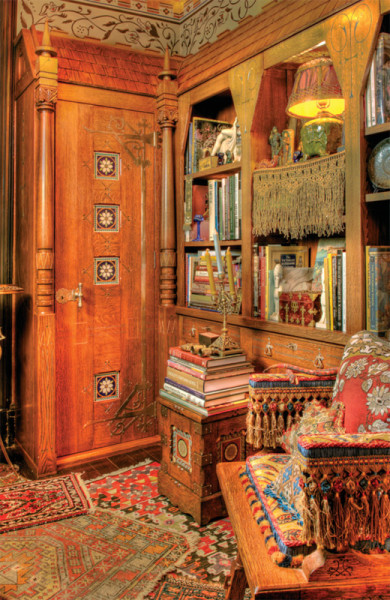
Inspired by the Modern Gothic furniture of Kimball & Cabus, this bookcase was built into a miniscule New York City apartment to create an English Aesthetic library. It’s made of oak and outfitted with all of the Gothic bells and whistles: a shingled roof (which lifts up for much-appreciated storage), ornate nickel-plated strapwork, and Pugin tiles set into the cabinet doors. (Photo: William Wright)
Indeed, that other iconic masculine furnishing, the billiard table, more often than not is found amongst the stacks, for few of us are fortunate enough to have two discrete rooms devoted to such pursuits. The days of “no girls allowed” have long since passed, and all are welcome. Any suggestion that the ladies traipse off to the music room as the gents slink into the library now seems laughable.
The residential library may be an anachronism, but we folks see it as a purposeful acknowledgement of the social mores and functions of an era long since past. More than any other room, it is a time machine: our dining rooms and parlors can be furnished entirely with antiques, but it is only in the hushed reverence of the library that the ghosts of the past reside. We build our altars to the past, sometimes with a nod, other times with a full-on embrace, but never so much as in the library.
Thanks to Brian Coleman for sharing his collections and his New York apartment library.







